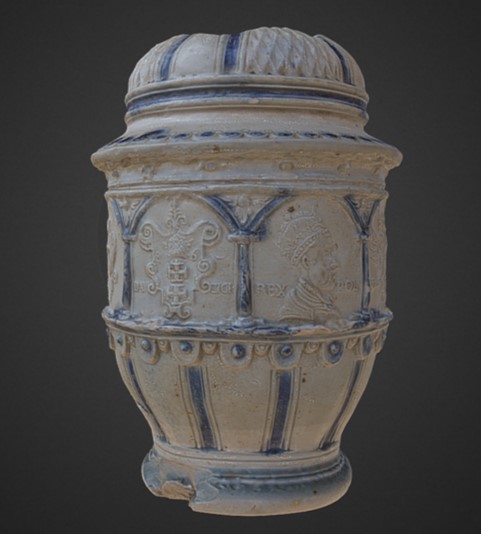Back in the 16th-century Netherlands, the high and mighty often used waterproof stoneware jugs, which were practical and fancy signs of wealth. A few years ago, during the construction of a parking garage in Delft, an example was found which has a fascinating link to Poland: it is decorated with the portrait of King Stephen Báthory, who ruled the Polish-Lithuanian Commonwealth from 1576 to 1586, as well as with several coats of arms, including those of Royal (Polish) Prussia and the city of Gdańsk. Moreover, it is dated 1586 and carries the maker’s initials: JEM, which points to Jan Emens Mennicken. Mennicken was a prolific potter from the Duchy of Limburg, in modern-day Belgium. His stoneware jugs were of the highest quality, and can be found in multiple museums.

Since the jug was apparently made for the Polish market, it is unclear how it ended up in Delft. Perhaps it was bought by a Dutch merchant in Gdańsk? Another intriguing explanation has to do with diplomacy. In 1586, the year of the jug’s production, Báthory sent an ambassador to the Netherlands. This Krzysztof Głoskowski was meant to persuade the Dutch to stop their revolt against the Spanish Habsburgs. He delivered a Latin speech before the States-General, which at that time assembled in… Delft! The exchange of gifts was an important part of diplomatic practice. It is possible, though uncertain, that Mennicken was commissioned by the Polish court and/or the city of Gdańsk to produce the jug, after which Głoskowski may have offered it to the States-General as a token of friendship, a reminder of the importance of Gdańsk as a trading partner of the Dutch and a symbol of Báthory’s authority.
A 3D reconstruction of the jug can be viewed here.
*I originally wrote this post for the social media outlets of the Dutch Embassy in Poland. This was post no. 42.